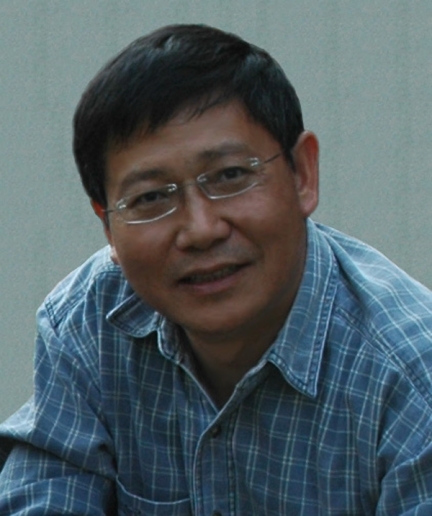Cells are the basic building blocks of living organisms, and they are extremely flexible in shape, internal organization, responsiveness to environmental cues, and function: such plasticity and versatility allow them, either alone or in combination, to fully sustain all life on Earth. How cells work has thus been a big question since the invention of the microscope and their discovery more than 300 years ago.
Xueliang Zhu
Interestingly, more than 2000 years ago, with the simple concept of yin and yang, the ancient Chinese seemed able to explain in principle how life works. Yin and yang are referred to as two opposite forces that are mutually dependent and intertransformable, as depicted in the famous Taiji Diagram. Their interplay is therefore thought to maintain the dynamic balance of life. This idea, now recognized as positive and negative feedback or regulation networks, also forms the basis of Chinese medicine. Because the yin-yang theory could be used to explain virtually all dynamic biological changes, investigations on detailed mechanisms were not encouraged. Yet great achievements in life sciences have been made in recent times by using Western methodologies, i.e., dissecting complex systems into ever smaller components, resulting in rapid accumulation of knowledge regarding mechanisms of cell organization and function. However, how to assemble this detailed information on individual parts into a full image of the living cell remains a major challenge.
Live cell fluorescence microscopy appears to fit nicely with both Oriental and Western philosophies. It enables direct visualization of in vivo cellular activities and therefore offers unique advantages over in vitro studies or studies using fixed cells (Stephens and Allan, 2003; Weijer, 2003).
Considerable progress has been made in both detection methods and equipment for live cell imaging. A wide range of fluorescent proteins, fluorochromes, and probes are now available as markers (Wang et al., 2008). Spinning-disk or laser scanning confocal microscopes provide excellent spatiotemporal resolution (Stephens and Allan, 2003). Recent advances in super-resolution microscopes even allow time-lapse assays with nano-scale resolution (Chi, 2009), which will no doubt greatly facilitate our understanding of cells.
It is likely that the future will bring continuous improvements in these technologies, yielding more molecular detection methods and higher spatiotemporal resolution. Considering the huge number of biomolecules working in a cell, many at low copy number, a difficult challenge will be to dramatically increase fluorescence detection sensitivity and channels. Diverse fluorochromes that can be excited with single monochrome light but emit fluorescence of different wavelengths, such as quantum dots, require only one filter cube to visualize them all and can thus markedly increase the detection speed as well as the number of targets that can be monitored simultaneously. Combinations of quantum dots have also been proposed to be capable of bar-coding large numbers of biomolecules (Chan et al., 2002). Nevertheless, such fluorochromes face serious obstacles in actual high-throughput applications in live cell imaging, mainly due to requirements of in vitro labeling of biomolecules, e.g., proteins, and their reintroduction into cells, and to difficulties in distinguishing signals of intact exogenous proteins from those of degraded proteins or even free fluorochromes. On the other hand, although the use of genetically encoded fluorescent proteins can largely overcome the aforementioned shortcomings, the number of such proteins is still low; moreover, different fluorescent proteins cannot be excited with a single light wave.
Ideally, fluorescence microscopy will be superseded by microscopic systems, e.g., an Å-scale microscope, or “angstromscope,” that directly discriminate biomolecules and allow real “nonaggressive” measurement of intracellular activities at the molecular level. Although we must wait to see if such a dream will be realized, the hope is that such systems can be made available in the next 50 years. Then we can fully explore the dynamic yin-yang that underlies all of cell biology.
REFERENCES
- Chan W. C., Maxwell D. J., Gao X., Bailey R. E., Han M., Nie S. Luminescent quantum dots for multiplexed biological detection and imaging. Curr. Opin. Biotechnol. 2002;13:40–46. doi: 10.1016/s0958-1669(02)00282-3. [DOI] [PubMed] [Google Scholar]
- Chi K. R. Super-resolution microscopy: breaking the limits. Nat. Methods. 2009;6:15–18. [Google Scholar]
- Stephens D. J., Allan V. J. Light microscopy techniques for live cell imaging. Science. 2003;300:82–86. doi: 10.1126/science.1082160. [DOI] [PubMed] [Google Scholar]
- Wang Y., Shyy J. Y., Chien S. Fluorescence proteins, live-cell imaging, and mechanobiology: seeing is believing. Annu. Rev. Biomed. Eng. 2008;10:1–38. doi: 10.1146/annurev.bioeng.010308.161731. [DOI] [PubMed] [Google Scholar]
- Weijer C. J. Visualizing signals moving in cells. Science. 2003;300:96–100. doi: 10.1126/science.1082830. [DOI] [PubMed] [Google Scholar]



